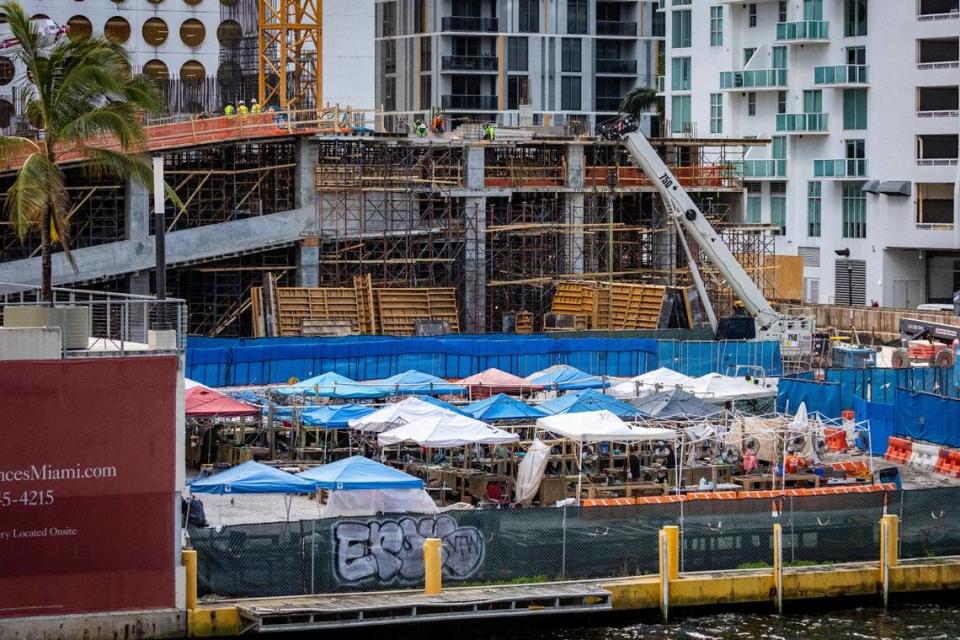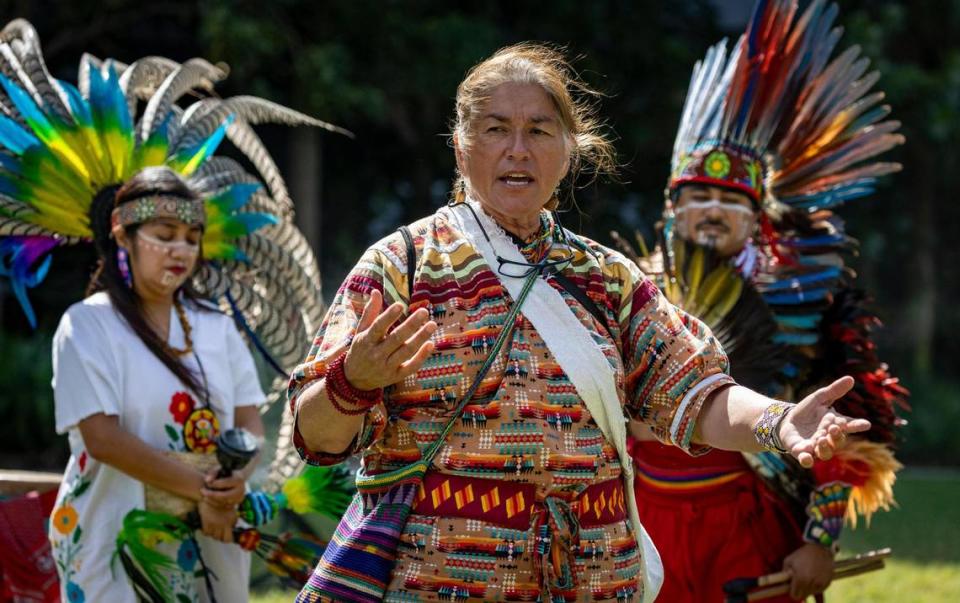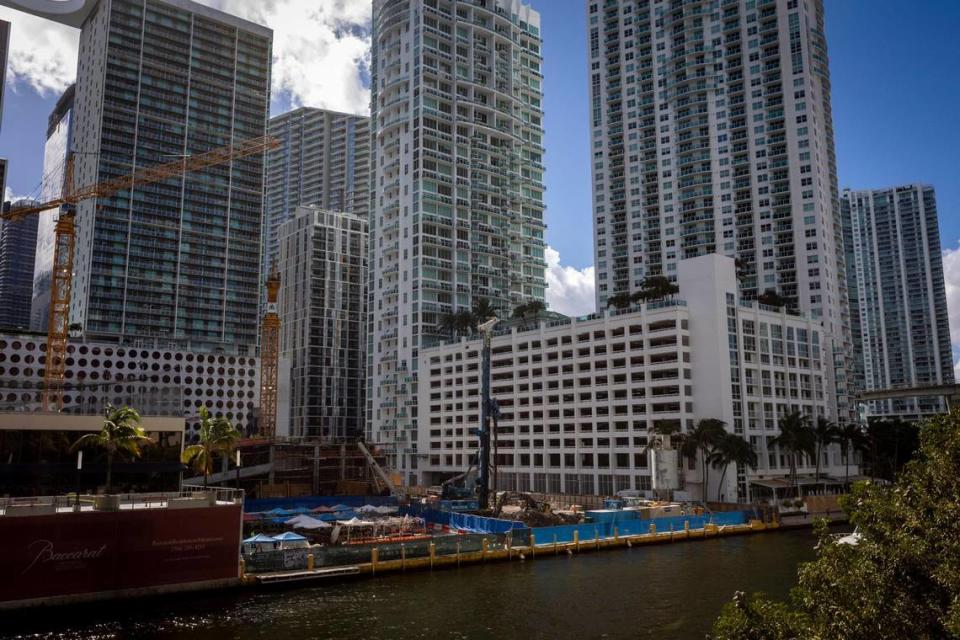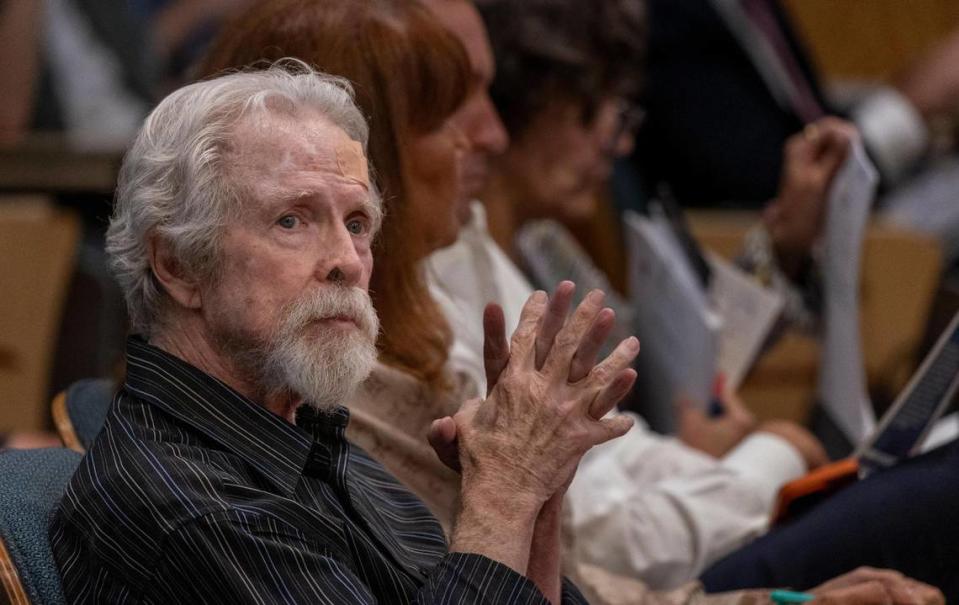Ancient Miami River site declared landmark. But developer can still build on it
Miami’s historic preservation board on Tuesday unanimously designated part of the site of an ancient indigenous village on the Miami River as a protected archaeological landmark — but the decision may have little practical effect on developer Related Group’s plans to build a tower over it.
And precisely how Related will handle expected archaeological discoveries at the newly designated site, still occupied by an office building, may not be known for months or even years.
The board’s 6-0 vote at Miami City Hall came six months after it acted under intense public pressure to begin drawing up protections for the lot, at 444 Brickell Avenue. It’s one of three contiguous parcels that Related is redeveloping on the south bank of the river where archaeologists have found surprisingly extensive and unusually well-preserved evidence of a thriving native culture thousands of years old, including millions of artifacts, animal and human remains and patterns of postholes for buildings carved in the limestone subsoil.
Construction has begun on two other towers even as archaeologists continue to excavate a portion of the Related property. As part of an agreement reached between Related and the preservation board during a contentious five-hour hearing in April, the city agreed not to seek landmark designation for the site of those two towers, but to focus only on 444 Brickell, where the occupied office building is slated for eventual demolition. Experts believe the demolition and excavation there will yield even more archaeological finds.

On Friday, Related will hold a ceremonial groundbreaking for Baccarat Residences, a widely advertised ultra-luxury condo tower behind 444 Brickell, even though archaeologists are still at work on the parcel where the building will rise. Ground preparation work has begun on a portion of the parcel.
Related did not contest Tuesday’s designation action. But, unusually, the newly approved designation document for 444 Brickell carries several legal conditions negotiated between the city and Related’s attorneys that acknowledge that the developer has “vested” legal interests in building a third tower on the 1.5-acre lot. Typically, such designation reports cover only whether a site meets criteria for historic or archaeological designation.
In the case of 444 Brickell, there was no real dispute that the site ought to be designated.
It was built in 1972 over what’s now clear was a portion of the remnants of a large town that served as a capital for the disappeared Tequesta tribe for centuries starting some 2,500 years ago. Certain spearheads found at the Related site are even older at nearly 7,000 years, suggesting more ancient occupation, independent archaeologists say.
But Related attorney Iris Escarra, of legal giant Greenberg Traurig, told the board that the city had granted zoning and site-plan approvals for all three towers a decade ago, thus vesting the developer with the legal right to build. Because the approval predates the board’s designation action on Tuesday, she argued, that means city preservation officials won’t have a say over what gets built on 444 Brickell unless Related decides not to go forward or to alter the project.
“If the project changes significantly, new construction would require board review,” Escarra said.
The board’s concurrence disappointed activists and representatives of Native American tribes at the hearing who had hoped the city would assert authority to protect the site from construction. One man shouted repeatedly at panel members as they prepared to vote.
At the hearing and at a morning prayer ceremony at the Miami Circle National Historic Landmark across Brickell Avenue from the Related property, participants said they consider any construction on the site, where human remains have been found, as a “desecration.”

“These are sacred grounds to us,” veteran Miccosukee tribe activist Betty Osceola told a group of about 30 supporters who gathered Tuesday morning at the Miami Circle to pray for preservation of the Related site. Osceola was a leading activist in the successful battle to save the circle from development after its discovery in 1998.
Three representatives of the Nahuas groups, original to Mexico and Central America, danced, blew conch shells and played a drum in a cremony to honor their ancestors and fellow indigenous people who once occupied the land now taken over by skyscrapers that today loom over the park around the Miami Circle, believed to be the remnants of a ceremonial Tequesta building, at the mouth of the river.
Experts were also concerned with some of the conditions in the designation report, including Miami-Dade County’s chief archaeologist, Jeff Ransom, who said they appear to restrict board oversight of future excavation finds at 444 Brickell.
The board revised one condition, at Ransom’s request and with Escarra’s agreement, to strengthen its ability to review in public hearings decisions made jointly by Related’s archaeologists and the city’s archaeologist on the handling of future archaeological discoveries at the site. However, the board’s opinion would be only advisory, and not binding.

“It’s nothing short of amazing, what’s been found there,” Ransom told the board in urging them to reconsider some conditions. “If, later on, something is found that comes to the board as another Miami Circle, what’s going to happen? Is it going to be destroyed? I think that the board review is really important.”
But Escarra rejected another change proposed by Ransom that would have given the board the ability to approve certificates to dig, the authorizations Related needs to begin excavation for archaeology and construction. Instead, those certificates will be issued by city preservation officers without public review.
Still to come, Escarra emphasized, are “preservation action plans” promised by Related as part of the April compromise with the city. The plans would lay out the developer’s approach to preserving at least a portion of the area, memorializing its original occupants, and storing, preserving and displaying finds and artifacts. The site plan approved for 444 Brickell a decade ago already sets aside green space along the river bank that will be incorporated into the plan, Escarra said.
She said the plans, each due six months after excavations are completed at the Baccarat and 444 Brickell sites, will also seek to “connect the dots” by physically linking together sections of the Tequesta village, including the Miami Circle, that were once contiguous but have been sundered by development and roads. One idea is to extend the planned riverwalk behind the Related projects under the Brickell Avenue Bridge to the Miami Circle.
The action plans will require review and approval from the preservation board.
What Escarra made clear, though, is that Related doesn’t plan to alter its construction plans. Details of the action plans, though already in the works, meanwhile will largely depend on what’s found in the ground, she added.

“The action plan is dependent on what we find. We do not know yet what is going to be the extent of that. There is no way for us to predict that,” Escarra said.
But she added that the approach taken by Related and the city on 444 Brickell represents a novel collaboration that could avoid a repeat of previous failures to preserve or properly show off previous Tequesta and historic finds along the river in Brickell and downtown Miami.
“This is a change in the tide, here today,” she told board members. “It’s a big moment that could change the course of this city connecting these dots.”
Under city regulations, developers building in certain designated archaeological zones, which include portions of downtown Miami, the river and Brickell, must underake archaeological excavation at their own expense to explore for historic and archaeological remnants.
Related hired prominent South Florida archaeologist Bob Carr, who discovered the Miami Circle and other ancient indigenous sites, to conduct what turned out to be a massive and lengthy excavation at its Brickell properties. Related chairman Jorge Perez put the cost of 18 months of digging at $20 million as of April.
But critics say Related tried to keep a lid on the discoveries, restricting access to the site, requiring Carr to sign a non-disclosure agreement and refusing news media interviews, while the city failed to publicize the finds or properly apprise the preservation board of their significance.
That changed earlier this year after archaeologists with the University of Miami and the Florida Public Archaeology Network began releasing details of the discoveries documented in public reports to the city, and pressing for public hearings on the matter.
Related and Perez at first sharply contested the need to formally designate any of its property, but eventually relented as the discoveries garnered international attention.

